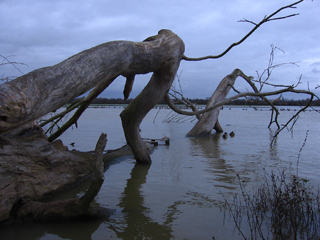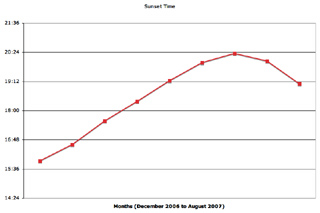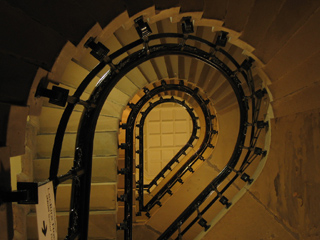For the vast majority of the four billion year history of the Earth, it would have been a very inhospitable place for human beings indeed. An atmosphere with oxygen in it, the existence of essential ecosystems (most of them composed of microorganisms), the presence of an ultraviolet-blocking ozone layer: all of these are essential to human life, and all are temporary and largely the product of random events. So too, a huge number of other considerations, from the ambient temperature to the level of volcanic activity. Of course, if the situation were different, beings would have evolved in a different way. There are, no doubt, other forms of metabolism; likewise, it is possible to endure all kinds of environments and ecological surroundings. This is where the anthropic principle and the Goldilocks fallacy collide.
The Goldilocks fallacy is to observe that if the conditions of the Earth were different, human beings as they are could not live here. The faulty conclusion drawn is that these ‘perfect’ conditions could not, or have not, arisen by accident. This is akin to seeing a large number of black moths sitting on black trees in England during the 19th century and stressing how perfectly matched they were. Of course they were, because soot from factories had blackened the trees, allowing black moths to hide from predators more effectively than their lighter brethren, who duly saw their numbers reduced. The situation establishes which beings will do well, and ensures that those who do not will disappear. This was Darwin’s great insight.
A broader version of the Goldilocks fallacy stresses how unlikely the development of life in the first place was, then uses that as evidence for divine creation. The first response to that is to wonder how unlikely life really is. Life, at the lowest level, is something that can take what is in the environment, then make copies of itself using those materials. Prions (the replicating molecules that cause mad cow disease) are a bit like crystals: they reproduce themselves on the basis of coming into contact with the right materials. Given millions of billions of galaxies, hundreds of billions of stars per galaxy, and an unknown but massive number of planets, there is certainly a lot of chemistry going on. Given what chemists have cooked up using a few basic organic molecules and lightening in a closed environment, I would be personally astonished if at least single-celled life forms did not exist elsewhere in our galaxy, much less in the observable universe.
The last step in the logical chain is to consider the very real possibility that our universe is only one of an infinite number that could exist. It is also entirely possible that others do exist. Some universes will have life forms in them who can putter about and strangle each other and write blog entries. Others will not, but there is nobody reporting on them. As such, the puttering, strangling, blogging beings who marvel at their own existence may be rather missing the point.







